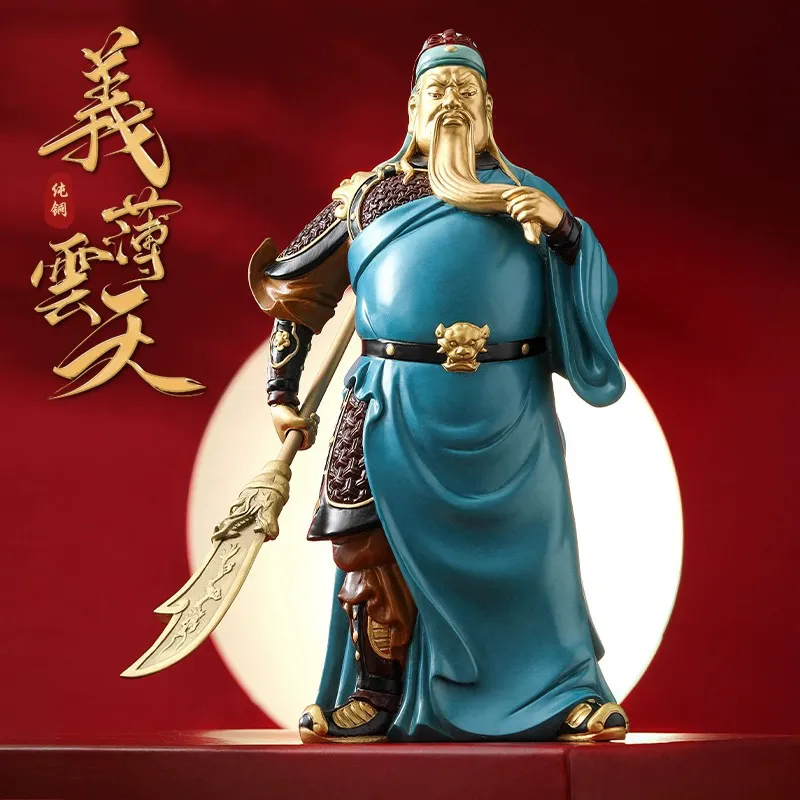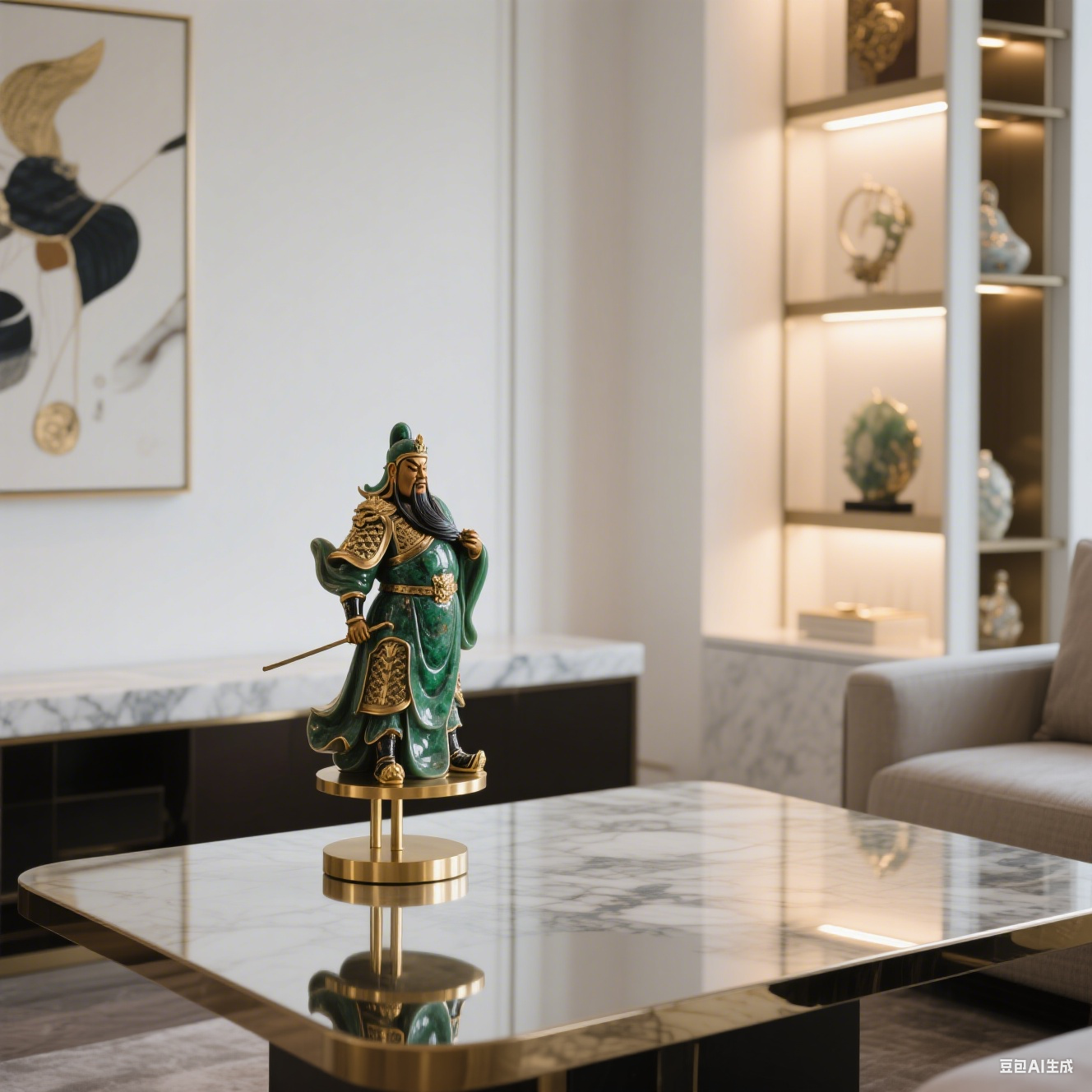In the vast traditional Chinese culture, Guan Gong (Guan Yu) shines as an immortal star across millennia. He was a famed Three Kingdoms general. He earned the title “Martial Sage” for “loyalty, bravery, benevolence, righteousness, credibility.” His strong positive energy makes him a key, sought-after feng shui decor element. From ancient temple statues to modern home decor, these ornaments carry cultural heritage. They also fuel people’s pursuit of integrity, wealth, and peace. Let’s dive into their feng shui wisdom and cultural codes.
I. Why Guan Gong Ornaments Became Feng Shui Symbols?
Guan Gong’s rise as a feng shui icon stems from his unique spiritual symbolism.
1. Loyalty & Righteousness: Safeguarding Homes and Businesses
History tells of Guan Gong’s “body in Cao Ying, heart in Han”—his unshakable morality. In feng shui, this steadfastness “stabilizes energy.” It protects homes and fends off disruptions. Moreover, it fits shops and offices needing unity.
2. Valor: Dispelling Evil
Guan Gong’s imposing stance with the Green Dragon Crescent Blade deters “negative energy.” In traditional feng shui, it resolves “sha qi.” This “sha qi” comes from sharp corners or clashing doorways. It works via “righteousness overcoming evil.”
3. Integrity: Attracting Wealth
Businesses honor him as the “Martial God of Wealth.” It’s not about direct wealth. Instead, it’s about “integrity brings prosperity.” Ancient beliefs held that integrity guarantees abundance. Thus, these ornaments symbolize thriving trade.
II. Shape Codes: Feng Shui in Design Details
Guan Gong ornaments have deliberate designs; each detail matters. Choose based on your needs.
1. Sword-Holding Postures: Guiding Energy
- Standing Sword: Blade upright, tip up. It symbolizes “warding off disputes.” Perfect for offices/shops to boost authority.
- Lifting Sword: Blade slants down, flexible. It attracts wealth and eases small troubles. Better for living rooms.
- Reading “Spring and Autumn”: Holding scroll, calm. It highlights “wisdom and prowess.” Ideal for studies or schools.
2. Costume Clues: Showing Aura
- Red Face, Green Robe: Classic design. Red means sincerity. Green stands for righteousness. It’s the most popular choice.
- Golden Robe: Common in shops. It symbolizes “fame and fortune.” Match space colors to avoid excess.
III. Placement Tips: Balancing Aura with Space
Follow “respect first, energy harmony.” Avoid taboos for best results.
1. Lucky Spots: Energy Hotspots
- Living Room Wealth Corner (diagonal from entrance): Stops wealth leakage.
- Office South (Li trigram): Li means “bright career.” Facing south equals success and help.
- Shop Cash Register Back: Leans on wall (has support), faces door. It guards wealth and draws customers.
2. Avoid These: Energy Conflicts
- Don’t face bathrooms (bad qi) or kitchens (strong fire). They clash with positive energy.
- Keep above waist level (on a curio cabinet). This shows respect.
- Separate from other religious statues. This keeps energy pure.
3. Cleaning: Keeping Energy Fresh
- Wipe weekly with a dry cloth. This clears obstacles.
- Use only water—no detergents.
- For heavy dust, light sandalwood (non-chemical) after wiping. This purifies.
IV. The Deeper Meaning of Guan Gong Ornaments
Guan Gong ornaments offer more than feng shui benefits. They’re cultural symbols of “loyalty, righteousness, credibility.” They’re also artistic works of craftsmanship.
As “space guardians,” they link past and present. Placing one means upholding integrity. This applies to business, life, and the quest for peace.
Image 1: [Traditional red-faced, green-robed Guan Gong statue in an ancient temple]
Image 2: [Modern-style Guan Gong ornament placed in a living room wealth corner]
Internal Link: Learn more about feng shui basics for home decor.
External Link: For historical context, see Guan Yu’s legacy.


